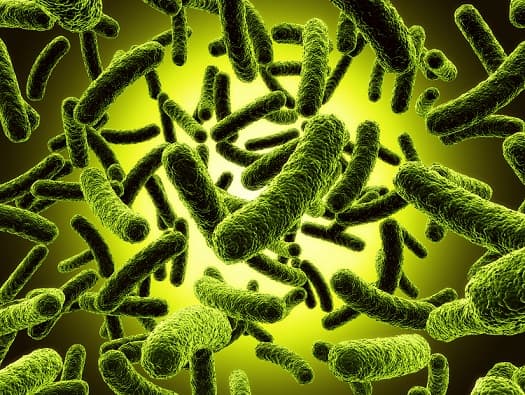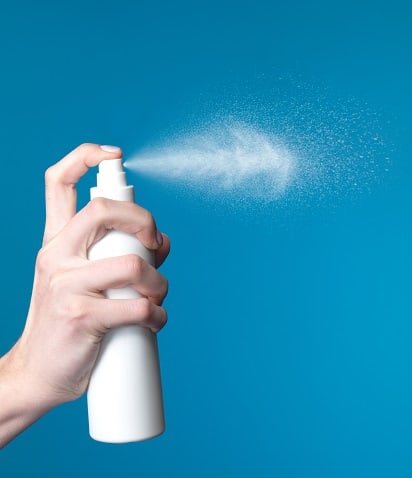 It’s highly likely that you have never heard of inflammation. If you have, then you have probably heard of it only very recently.
It’s highly likely that you have never heard of inflammation. If you have, then you have probably heard of it only very recently.
The reason why is that inflammation is a silent monster that can wreak havoc with your health without anyone noticing. It is so silent that scientists, with all their expertise and skill, have only begun paying attention to it in the last ten years…
…and it’s a good thing they have been. Inflammation has been linked to a range of health problems ranging from the minor like joint pain and fatigue, to the deadly like heart disease and cancer.
Most importantly for us, chronic inflammation is one of the two biggest underlying causes of acne. As we discussed yesterday, the first big factor is sebum oxidation, and this is what causes your pores to get blocked. However sebum oxidation doesn’t generally cause acne by itself; it is chronic inflammation that does this.
Blocked pores set the stage for acne, and chronic inflammation is the engine that fuels it. In fact if you had no chronic inflammation at all, you could still have acne, but 1) it would be significantly less likely, and 2) it could never get to the big, red, and swollen state that acne patients hate so much.
But all of this is meaningless without answering the obvious question: what is inflammation?
The first and very most important thing you have to understand is that it is chronic inflammation which damages your skin. It is also what damages the rest of your health. There are two key types of inflammation, and while chronic inflammation is very unhealthy, its cousin acute inflammation is highly beneficial in certain circumstances. In fact acute inflammation is completely necessary for you to survive.
At its most basic, acute inflammation is a function of the immune system that allows you to recover from a threat. It does this by inducing physical effects in your body which cause you to pursue a course of action that allows the healing process to carry on.
That’s a mouthful, so here is an example:
How acute inflammation keeps you alive
Imagine you are cycling through a forest. You are having the time of your life; you are hurtling through the trees, at risk of crashing into any one of them, and you are moving at an exciting pace the likes of which you have never experienced before…
…but then suddenly, while everything is going so well, your bike snags on a tree root and you go flying. Thankfully, you manage to avoid cracking your skull, or something worse, but you do have a gigantic cut on your leg. There is only a moderate amount of blood coming from it, but it is a decent sized cut nevertheless.
The first thought of an adrenaline junkie like this would be to hop back onto his bike and renew his crazed cycling; he wouldn’t let such a pathetic cut put him off his day.
Read Annihilate Your Acne – get the ultimate diet for clear and glowing skin!
But to the human body, a cut is a cut. Any breach of the body’s skin that allows blood to leak out is potentially a way for infections and other malicious organisms to get in, and thus to the body, any cut is potentially a cause of death. Therefore it is vital that this cut heals as fast as it can, and the body has a solution: acute inflammation.
When the man cuts his leg open, his body immediately kicks into repair mode; white blood cells, other chemicals, and extra blood supplies are immediately sent to the site of the wound to repair it. But just as important as the actual healing of the wound is to make sure that the cyclist doesn’t interfere with the process. To do this the body has to guarantee that he doesn’t touch it, or put strain on it, and the body’s solution is acute inflammation.
Acute inflammation is what gives the wound the red, swollen, and painful characteristics that we are all familiar with. The body achieves this by sending numerous chemicals to the wound; these include various cytokines like interleukin-9, bradykinin (responsible for controlling pain sensitivity), and numerous others.
So how on earth does this help the cyclist’s wound? It helps him because if the enthusiastic maniac jumped right back onto his bike and recommenced cycling into oblivion, the additional strain on his leg would almost certainly derail the healing process. But because acute inflammation means that he can’t put any strain on the leg, the cyclist is forced to let the wound heal and the man’s life is potentially saved.
There are countless other instances in which this could happen; a punch to the face that creates a bruise, a sprained ankle, or even a bullet wound. The key point is that acute inflammation has unpleasant temporary effects, but they are highly beneficial for your health in the medium to long term.
Getting a cut or a bruise causes a localised inflammatory response, but it is also possible to get an acute inflammatory response across your whole body. One example is if you contract the flu. Many of the symptoms of flu are not from the flu itself, but are actually from the acute inflammation designed to keep you inactive.
Important article – the top 6 vitamins and minerals for clearing acne
When you contract an illness, your body needs just about all the energy it can muster to fight it off, and this goal is pretty badly hindered by you running off and playing basketball, for example. So to allow you to heal, the body induces several bodily symptoms like tiredness, weakness, and fever.
These symptoms are enough to keep you in bed, prevent you from burning energy, and thus to allow the immune system to do its job the best it can and “save your life”. They also act as a warning signal for you to not to do something again; for example, you can get similar inflammatory effects when you eat an unhealthy food, which warns you not to eat it again.
Take note, because that example is particularly relevant for acne.
Chronic inflammation – acute inflammation’s deadly cousin
 These symptoms of acute inflammation are all highly beneficial in the short term. If we didn’t have such great sanitation they would almost certainly save your life every so often…
These symptoms of acute inflammation are all highly beneficial in the short term. If we didn’t have such great sanitation they would almost certainly save your life every so often…
…but the key point is that they are only supposed to be temporary. If the inflammatory response never ends, then acute inflammation will become chronic inflammation.
During chronic inflammation the inflammatory chemicals such as cytokines and neutrophil will be constantly pumped out by the body. They are extremely helpful when temporary but if active for too long they can wreak havoc on your bodily functions.
Important article – the top 7 natural topical treatments for acne
The job of a cytokine is to break down healthy tissue at the site of a wound, to cause it damage and let it repair itself, but if cytokines are flowing around your body in vast quantities, they will inevitably cause other healthy tissue damage as well. That is why a classic symptom of chronic inflammation is weak muscles and aching joints.
The problem with chronic inflammation is that the response is both permanent – which is bad – and also ramped up to an extreme level, which makes things even worse. Chronic inflammation has been linked to conditions as varied as diabetes and blindness.
But how does this situation come about?
This might sound obvious but chronic inflammation comes about due to you doing too many inflammatory things. If you eat one unhealthy food for example, then you might experience a minor inflammatory response all over your body, which wouldn’t be too bad.
However, if you eat that food a couple of times a day, every day, then the problems will quickly start. If you combine that with several other unhealthy foods every day along with other unhealthy substances from your lifestyle, then inflammation will quickly be both permanent and completely over the top. It is this category that many people fall into.
If you have acne then it is extremely likely that you have chronic inflammation at least to a moderate degree. The problem with the condition is that it is so chronic that there are few obvious symptoms; in fact acne is one of the only ones. When most people initially ingest a bad food or other substance, they will notice the uncomfortable symptoms.
Why bread and pasta are a massive cause of acne
But the vast majority of people have been living unhealthily for their whole lives; therefore feeling inflamed and unhealthy begins to feel normal to them and they don’t realise there is a problem. This is why scientists consider chronic inflammation to be one of the sneakiest diseases; because you are highly likely to have it without even realising.
How chronic inflammation causes acne
Chronic inflammation can damage your body in a massive amount of ways, and therefore it can easily affect your skiderstand is that it is cfects come from two major and direct factors, both of which have gigantic effects on your skin.
Chronic inflammation makes your acne red and swollen: Most people think that p. acnes, the classic acne bacteria, is what directly causes acne but this isn’t the case. P. acnes bacteria does lead to acne but it is actually your immune system’s response to p.acnes that directly creates it. When your immune system is functioning healthily, a little bit of bacteria looks like a pathetic threat to it, and thus the p. acnes is only treated to a very minor attack.
However, when your immune system is constantly on the alert and is ramped up beyond belief, it sends out far too many inflammatory chemicals to deal with the problem. This overwhelming attack kills the bacteria easily, but the side effects are the problem. The massive amount of cytokines will cause collateral damage to the rest of the skin pore, with the result that the surrounding skin goes red, swollen and painful.
In other words, a pimple is created, and acne is born.
Making matters worse, it doesn’t even take the presence of bacteria to let this happen. One study has shown that in the earliest stages of a pimple you can sometimes find no p. acnes, but lots of inflammatory chemicals.
This inflammation is created by oxidised sebum. Oxidised sebum actually triggers a local increase in inflammatory chemicals, and if you suffer from chronic inflammation, the amount of chemicals released will be far greater.
Therefore chronic inflammation can cause a spot to begin even without any bacteria. Bacteria is extremely common in blocked skin pores, so the response to it simply makes matters worse.
Raw honey – a natural secret for wiping out acne bacteria
Chronic inflammation depletes your antioxidants: Antioxidants are absolutely vital for preventing the oxidation of sebum, and thus preventing blocked pores. The problem with chronic inflammation is that part of the acute inflammatory response involves the release of free radicals.
Your immune system uses substances called neutrophils, and it’s their job to release free radicals when you’re faced with a threat. The idea is that the free radicals will break down damaged tissue and thus allow it to be rebuilt.
This process is very helpful when localised but during chronic inflammation, the amount of neutrophils in your body will be huge and consequently the amount of free radicals released will be far too high.
Free radicals can wreck your health in large amounts, and to prevent this from happening your body neutralises them with antioxidants. Therefore a state of chronic inflammation can seriously deplete your antioxidants levels, which leaves less available to protect your skin.
How does chronic inflammation begin?
 The amount of factors that can cause chronic inflammation is truly vast. In the vast majority of circumstances, it is not one particular problem that leads to it, but dozens of poor dietary and lifestyle choices.
The amount of factors that can cause chronic inflammation is truly vast. In the vast majority of circumstances, it is not one particular problem that leads to it, but dozens of poor dietary and lifestyle choices.
Any one of these in isolation would not cause a huge inflammatory response but when they begin to add up, and they become a regular part of your life, the burden on your body becomes gigantic. There are so many causes that it would be impossible to list them all, but we can divide them into a few distinct categories.
A poor diet – there are a lot of foods that us humans cannot process very well, and when we eat such foods the inflammatory response begins. One of the more common examples is sugar (specifically fructose, rather than glucose), which is fine in moderate amounts but can cause inflammation in excess.
The problem is that sugar and so many other bad foods have become staples in the modern diet; therefore the inflammatory symptoms they cause have become a normal part of life and people no longer notice the pain and problems they cause. Plenty of artificial ingredients lurking in processed foods are inflammatory as well, which is why eating too many processed foods is a big cause of chronic inflammation. A prime example of this is the trans-fat, which is notorious for causing inflammation.
Finally, there are other potential problems with food that don’t relate to the actual food itself; these include pesticides, herbicides, and chemicals used for processing. Other food groups, especially dairy products like milk and cheese, depend on your bodily circumstances.
Read the eBook: learn why vegetable oils are an acne nightmare
Environmental toxins – there are a lot of inflammatory chemicals in products now; beauty products have them, face washes have them, even food cans have them. A very common example is BPA, which pops up in places as varied as tap water, newspaper print, and children’s toys. BPA has been linked to increased markers of inflammation in the past and is a rather deadly substance anyway. It is known to be an endocrine disrupter and can even cause brain damage according to some reports.
Seeing as the inflammation system is designed to cause a response to invasive and unhealthy substance, you only need common-sense to deduce that if BPA causes so many problems, it might just cause an inflammatory response as well. BPA is the tip of the iceberg as far as these chemicals go. Inflammatory chemicals and heavy metals lurk everywhere; from spray deodorants to fruits and vegetables to household plastics.
Sleep deprivation – lack of sleep can cause elevations in inflammatory cytokines and other chemicals. Missing one night isn’t harmful, but the more you miss, the worse the problem will get. In my eBook Annihilate Your Acne there’s a whole chapter on sleep deprivation.
Getting the wrong nutrition – there are several nutrients which put the breaks on the immune system and keep it in control: an important example is zinc, which is famous for curing acne. Other dietary factors are involved as well, such as not getting enough omega-3 fatty acids. Omega 3 deficiency is so important that you’ll never clear your acne if you don’t pay attention to it.
Why vitamin C is the acne nutrient you cannot ignore
Lack of exercise – moderate exercise is known to reduce chronic inflammation, so we can also say that sitting around all day can cause it. The exercise doesn’t even need to be intense; an hour of brisk walking will improve your inflammatory markers excellently.
Get started on inflammation right now
 To give chronic inflammation a pummelling there’s literally hundreds of different lifestyle and dietary strategies. For instance, I listed 18 acne-friendly foods that can lower bodily inflammation levels in this article.
To give chronic inflammation a pummelling there’s literally hundreds of different lifestyle and dietary strategies. For instance, I listed 18 acne-friendly foods that can lower bodily inflammation levels in this article.
In the long run you’ll have to address all the factors outlined above. There’s also additional information in my eBook about how compromised gut function can lead to runaway inflammation.
However if you’re itching to put the shackles on your immune system right now, with no delays, the best thing you can do is start taking this MegaFood Zinc (amazon link) supplement.
In part one of this series I talked about why you need more vitamin E to stop your pores from clogging up. I said that taking a vitamin E supplement like Garden of Life Raw Vitamin E (amazon link) is thus a great way to start.
Well, zinc is the equivalent for inflammation. If you have no time whatsoever to formulate an acne master plan with loads of healthy foods carefully arranged by nutrition, and are looking for a good old fashioned miracle pill, then those two are the best. Zinc for inflammation, and vitamin E for preventing sebum oxidation.
How does zinc work? Basically, it is responsible for directly constraining the immune system. You’ve got all the immune system chemicals and actors in place, constructed by proteins, calcium and iron, but zinc is responsible for controlling them. In other words, it does exactly what we acne-clearing enthusiasts need to do to prevent acne. According to one study, 54.1% of acne patients are deficient in zinc, and according to another, 31.2% enjoyed a reduction of two thirds or more when they took a supplement.
The best zinc supplement money can buy is this MegaFood Zinc (amazon link).
After using many different zinc supplements over the years, this one of the best I have ever stumbled upon. Why? It has no unhealthy fillers, being completely free from corn flour and magnesium stearate. The zinc is derived from food and thus well-absorbed, and there’s even a bonus blend of healthy fruits and vegetables like broccoli and beetroot.
Remember: vitamin E and zinc is the starter pack for acne. As single strategies go, probably only cold showers, eating less carbohydrates, and avoiding added sugar come close.
Conclusion
The more of the factors behind chronic inflammation you can remove, the better. Without chronic inflammation, the chances of acne are vastly reduced.
Many studies now implicate chronic inflammation as being the single biggest cause of acne; in one of them a team of scientists examined both normal skin and areas with acne, and found that inflammatory markers (interleukin 1, CD3+) were significantly higher in the skin with acne.
The same study also suggests that inflammation is present in the very earliest stages of a pimple. Seeing as we have a clear scientific explanation as well, we can safely say that reducing chronic inflammation is one of the very best things you can do.
Luckily, the problem is quite easy to fix; once you have removed all the culprits, inflammation levels can be lowered quickly. Your immune system requires a steady stream of threats to keep it on the attack mode, so you should be able to see very quick and significant changes by removing them.
Remember, the two fundamental causes of the acne process are sebum oxidation, and chronic inflammation.
NEXT: learn the root causes of acne, clear your skin permanently
Thanks for reading!